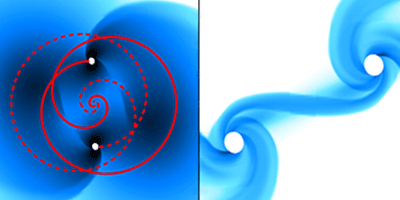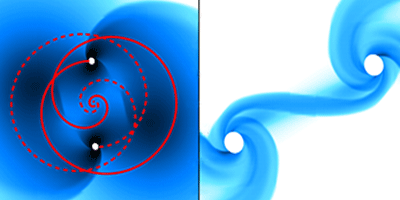A Black Hole’s Lucky Stars
Astronomers have recently discovered, in the most remote corners of the Universe, a number of quasars surrounding black holes a billion times more massive than the Sun. Researchers have dated these distant supermassive black holes (SMBHs) to only several hundred million years after the Big Bang, but are uncertain how such massive objects could have formed so quickly. Writing in Physical Review Letters, Christian Reisswig at the California Institute of Technology and colleagues analyze one possible origin of SMBHs in the early Universe.
Black holes are believed to grow from an initial “seed” that accretes more matter over time. But assuming realistic accretion rates, SMBHs that formed soon after the Big Bang must have come from already massive seeds. Researchers have proposed that large enough seeds could have formed either directly from a primordial gas cloud or in the aftermath of the collapse of a massive star.
Using hydrodynamic models based on general relativity, Reisswig et al. simulated one scenario in which a pair of SMBHs forms from the collapse of stars with masses ~ times that of the Sun. The process is possible if the star is rotating rapidly and, at the onset of its collapse, small binary fluctuations in the star’s density are present. These fluctuations may seed the development of a pair of black holes that subsequently inspiral and merge into a single SMBH.
According to their calculations, this type of SMBH formation would have been accompanied by the emission of intense gravitational waves. Upcoming space-based gravitational-wave observatories may take note and aim their detectors at SMBHs to reveal the elusive waves predicted by Einstein in 1915. – Matteo Rini





